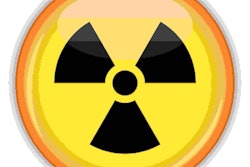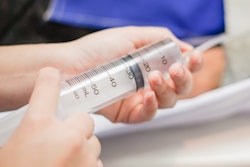
Adjusting the radiation dose for patients based on their T-shirt size could be an easy way for clinicians to estimate appropriate doses for CT exams, according to a study published April 6 in the European Journal of Radiology.
The method could make it easier to set appropriate radiation doses for patients undergoing CT exams, wrote a U.S.-based team led by Xinhua Li, PhD of Massachusetts General Hospital in Boston.
"T-shirt size provides an alternative but intuitive tool for the clinic," the group noted. "Stating that a patient with XXL size typically may need twice the dose as compared to a patient with M size provides a simple and meaningful message that does not come easily otherwise using a variety of dose and size metrices."
CT radiation dose is adjusted based on patient body size, with a higher body mass being administered a greater dose, the team wrote. Typically, dose is calculated taking patient age, body weight, and body mass index into account, but there's a need for a simple way to assess body habitus to correlate exam dose.
The team hit on the idea of using T-shirt size to do this, classifying CT radiation doses using T-shirt sizes based on Russell Athletic wear size charts (XXS, XS, S, M, L, XL, and XXL).
The study included data taken from 930,000 CT scans from 256 U.S. facilities. From this data, the investigators classified 20 types of CT exams, including the following:
- Six categories of chest CT scans (chest with and without contrast, heart calcium, low-dose CT lung cancer screening, pulmonary artery angiogram and embolization)
- Eight categories of abdomen/pelvis scans (abdomen with and without contrast, pelvis with and without contrast, abdominopelvic cavity with and without contrast, abdomen aortic angiogram, and abdominopelvic angiogram with contrast)
- Six categories of abdominal/pelvic organ scans (liver, pancreas, kidney cancer, kidney multiphases, urogram, colonography)
Using size medium as reference (with the chest diameter measuring 31.8 inches), the team set volume CT dose index (CTDIvol) for the other T-shirt sizes. Very small patients received about 60% of the dose compared to medium-size patients, and XXL patients required double that dose.
There was a 40% to 220% variation in the size-specific dose estimate across the range of T-shirt sizes (The range for chest exams across all T-shirt sizes spanned 6 mGy to 12 mGy, for example), the team explained.
| Variation in CTDIvol by T-shirt size | |
| T-shirt size | CTDIvol as compares to M T-shirt size |
| XXS | 60% |
| XS | 65% |
| S | 75% |
| M | 100% |
| L | 130% |
| XL | 165% |
| XXL | 210% |
Using T-shirt size offers an easy, effective way to estimate CT exam dose, according to the authors.
"[Our] study ... indicates that the concept of expressing body habitus in terms of T-shirt size is not only simple and intuitive for healthcare professionals, but also provides a tool to have perception of differences in dose metrices among patients of different body build," they concluded.




















